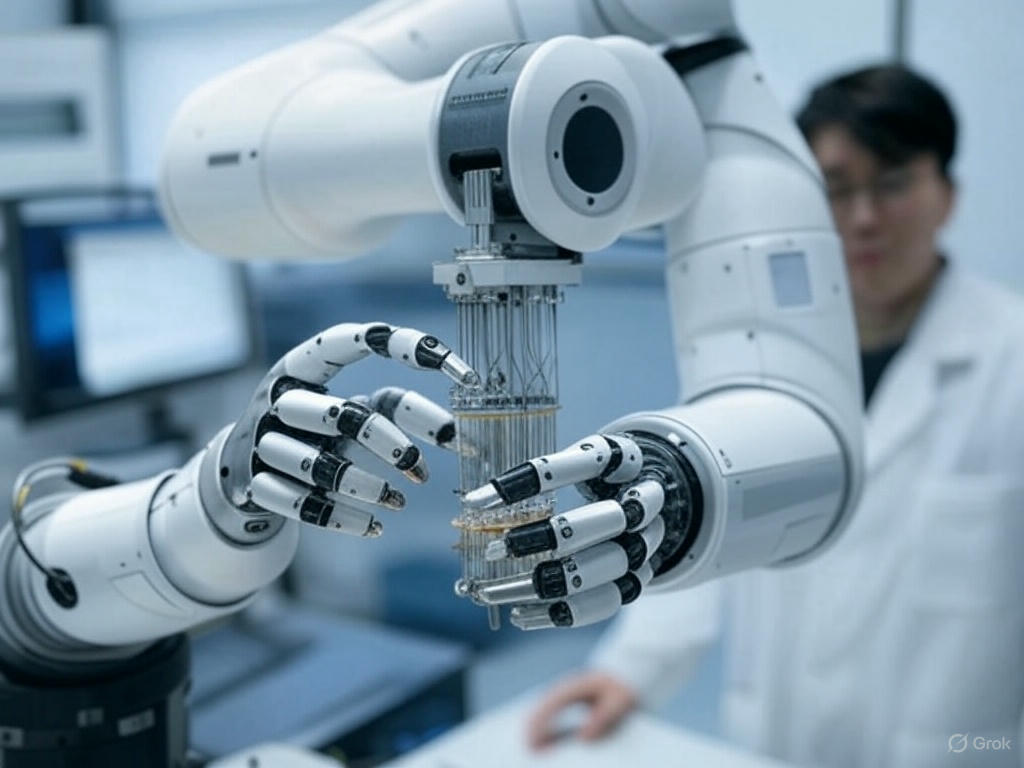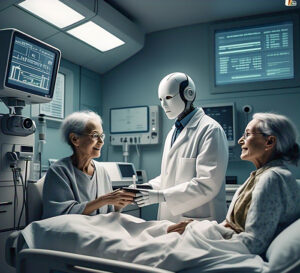The Rise of Robotics and Automation: Transforming the Future
Introduction: The Robot Revolution
In the 1920s, Czech playwright Karel Čapek introduced the word “robot” in his play R.U.R. (Rossum’s Universal Robots). Derived from the Czech word “robota,” meaning forced labor, the term described artificial humans created to work in factories. A century later, robots and automation systems have transcended science fiction to become integral parts of our world—manufacturing our goods, exploring distant planets, performing delicate surgeries, and even vacuuming our homes.
We are living through a transformative period in which robotics and automation are reshaping industries, economies, and daily life at an unprecedented pace. From the factory floor to the operating room, from farm fields to outer space, intelligent machines are augmenting and sometimes replacing human capabilities, creating new possibilities while challenging us to rethink fundamental aspects of work and society.
This guide explores the exciting world of robotics and automation—what these technologies are, how they work, where they’re being applied, and what the future might hold as they continue to evolve and transform our world.
Fundamentals: Understanding Robotics and Automation
Defining the Field
While often mentioned together, robotics and automation represent distinct but overlapping domains:
Robotics involves the design, construction, operation, and use of robots—machines capable of carrying out tasks with varying degrees of autonomy. A robot typically consists of:
- Mechanical structure: The physical body, including joints, limbs, and end effectors (like grippers or tools)
- Sensors: Components that gather information about the environment (cameras, microphones, pressure sensors, etc.)
- Actuators: Motors and other mechanisms that allow the robot to move and interact with its surroundings
- Control systems: Software and hardware that process sensor data and determine the robot’s actions
- Power supply: Energy source that enables the robot to function
Automation refers to technology that performs processes or procedures with minimal human assistance. While robotics often involves automation, automation systems don’t necessarily include robots. For example:
- An automated coffee machine that brews coffee at a programmed time uses automation but isn’t a robot
- A robotic arm in a factory that picks and places items is both a robot and an example of automation
- A self-driving car combines robotics (the vehicle itself) with automation (the autonomous driving system)
The key distinction is that robotics typically involves physical machines that interact with the world, while automation can be purely software-based or involve simpler mechanical systems.
A Brief History: From Ancient Dreams to Modern Reality
The concept of creating artificial beings dates back to ancient civilizations, but modern robotics and automation have evolved through several key phases:
Early Mechanical Automation (pre-20th century):
- Automatons in ancient Greece and the Islamic Golden Age
- Mechanical calculators and looms in the 17th-18th centuries
- Industrial Revolution and the mechanization of manufacturing
Early Robotics (1920s-1960s):
- First use of the term “robot” in Karel Čapek’s play (1920)
- Isaac Asimov formulates the Three Laws of Robotics (1942)
- Unimate, the first industrial robot, installed at General Motors (1961)
Industrial Robotics Boom (1970s-1980s):
- Widespread adoption of robotic arms in manufacturing
- Development of more sophisticated control systems
- Japanese companies like Fanuc and Kawasaki become robotics leaders
Expansion Beyond Industry (1990s-2000s):
- First surgical robots for minimally invasive procedures
- Mars rovers Spirit and Opportunity explore another planet
- Roomba introduces robots to home cleaning (2002)
- DARPA Grand Challenge drives autonomous vehicle development
The Current Era (2010s-Present):
- Collaborative robots (“cobots”) work alongside humans
- Deep learning revolutionizes robot perception and control
- Boston Dynamics demonstrates highly mobile quadruped and bipedal robots
- Warehouse automation transforms e-commerce logistics
- Drones become widely available for commercial and consumer applications
This evolution reflects a gradual shift from rigid, pre-programmed machines to increasingly adaptable, perceptive, and autonomous systems that can operate in diverse and unpredictable environments.
Core Technologies: What Makes Modern Robotics Possible
Several technological advances have converged to enable today’s robotics revolution:
Advanced Sensors:
- Computer Vision: Cameras combined with image processing algorithms allow robots to “see” and interpret their environments
- LIDAR (Light Detection and Ranging): Uses laser pulses to create detailed 3D maps of surroundings
- Force/Torque Sensors: Enable delicate manipulation by detecting the forces a robot applies
- Inertial Measurement Units (IMUs): Provide data about a robot’s orientation and movement
Artificial Intelligence and Machine Learning:
- Deep Learning: Enables robots to recognize objects, understand speech, and make decisions based on complex sensor data
- Reinforcement Learning: Allows robots to improve their skills through trial and error
- Computer Vision Algorithms: Help robots identify objects, people, and navigate environments
- Natural Language Processing: Facilitates human-robot interaction through voice commands
Advanced Materials and Actuators:
- Lightweight, High-Strength Materials: Carbon fiber composites and advanced alloys improve strength-to-weight ratios
- Soft Robotics: Flexible materials that enable safer human-robot interaction and adaptable gripping
- Improved Motors and Servos: More precise, efficient, and compact motion control
- Artificial Muscles: Emerging technologies like electroactive polymers that mimic biological movement
Power and Energy Storage:
- High-Density Batteries: Longer operating times for mobile robots
- Efficient Power Management: Maximizing battery life through optimized consumption
- Wireless Charging: Enabling autonomous recharging for continuous operation
Computing and Networking:
- Edge Computing: Processing data directly on robots rather than in the cloud
- 5G Connectivity: Enabling real-time control and coordination of robot fleets
- Cloud Robotics: Sharing data and learned behaviors across multiple robots
These technologies combine to create robots that can sense their environments, make decisions based on what they perceive, and physically interact with the world in increasingly sophisticated ways.
Types of Robots: From Industrial Arms to Humanoids
The term “robot” encompasses a diverse range of machines with different forms and functions:
Industrial Robots
These are the workhorses of manufacturing and were the first commercially successful robots:
Articulated Robot Arms:
- Feature multiple rotary joints (typically 4-6)
- Mimic the range of motion of a human arm
- Used for tasks like welding, painting, assembly, and pick-and-place operations
- Examples: ABB IRB series, KUKA KR series, Fanuc R-2000
SCARA Robots (Selective Compliance Assembly Robot Arm):
- Rigid in the vertical direction but compliant in the horizontal plane
- Excellent for fast, precise assembly operations
- Common in electronics manufacturing
- Examples: Epson G-series, Yamaha YK-X series
Delta Robots:
- Parallel robot design with three arms connected to a common base
- Extremely fast and precise for light payloads
- Often used in food packaging and pharmaceutical sorting
- Examples: ABB FlexPicker, Kawasaki YF03N
Collaborative Robots (Cobots):
- Designed to work safely alongside humans without safety barriers
- Often equipped with force-sensing capabilities to detect collisions
- Easier to program through demonstration rather than coding
- Examples: Universal Robots UR series, Rethink Robotics Sawyer, ABB YuMi
Mobile Robots
These robots can move through their environments rather than being fixed in place:
Autonomous Mobile Robots (AMRs):
- Navigate dynamically using sensors and maps
- Adapt to changing environments and obstacles
- Used in warehouses, hospitals, and office buildings
- Examples: Mobile Industrial Robots MiR series, Fetch Robotics Freight
Automated Guided Vehicles (AGVs):
- Follow predetermined paths using magnetic strips, wires, or markers
- Less flexible but often simpler than AMRs
- Common in manufacturing and logistics
- Examples: Daifuku AGVs, JBT AGVs
Legged Robots:
- Use articulated legs rather than wheels for mobility
- Can navigate difficult terrain inaccessible to wheeled robots
- Quadrupeds (four legs) are currently more practical than bipeds (two legs)
- Examples: Boston Dynamics Spot, ANYbotics ANYmal
Drones/UAVs (Unmanned Aerial Vehicles):
- Aerial robots capable of autonomous or remote-controlled flight
- Used for inspection, surveillance, mapping, and delivery
- Examples: DJI Mavic series, Skydio 2, Zipline delivery drones
Autonomous Vehicles:
- Self-driving cars, trucks, boats, and other transport
- Use multiple sensors and AI to navigate safely
- Examples: Waymo vehicles, Tesla Autopilot, Nuro delivery vehicles
Service and Specialized Robots
These robots are designed for specific applications beyond manufacturing:
Medical Robots:
- Surgical Robots: Assist surgeons with precise, minimally invasive procedures
- Rehabilitation Robots: Help patients recover movement after injuries
- Care Robots: Assist with patient lifting, monitoring, and medication delivery
- Examples: Intuitive Surgical da Vinci, KUKA LBR Med, Toyota Human Support Robot
Agricultural Robots:
- Harvesting Robots: Autonomously pick fruits and vegetables
- Weeding Robots: Identify and remove weeds without herbicides
- Monitoring Drones: Assess crop health and irrigation needs
- Examples: Blue River Technology See & Spray, Harvest CROO berry harvester
Underwater and Space Robots:
- ROVs (Remotely Operated Vehicles) for underwater exploration
- Mars Rovers for planetary exploration
- Space Maintenance Robots for satellite servicing and space station tasks
- Examples: NASA Perseverance rover, Oceaneering ROVs, Astrobee on the ISS
Consumer and Domestic Robots:
- Cleaning Robots: Vacuum, mop, pool, and window cleaning
- Social Robots: Companionship and assistance for children and the elderly
- Entertainment Robots: Programmable toys and educational platforms
- Examples: iRobot Roomba, Sony Aibo, UBTECH robots
Humanoid Robots
These robots mimic human form, though their capabilities vary widely:
- Designed with a head, torso, two arms, and two legs
- Range from simple demonstration platforms to sophisticated research systems
- Applications include research, entertainment, and potential future caregiving
- Remain challenging due to the complexity of bipedal locomotion and dexterity
- Examples: Boston Dynamics Atlas, SoftBank Robotics Pepper, NASA Valkyrie
While humanoids capture the public imagination, non-humanoid designs are often more practical for specific tasks. The robot’s form should follow its function, not necessarily human anatomy.
Automation: Beyond Physical Robots
While physical robots represent the most visible aspect of automation, many automated systems operate without robotic components:
Software Automation
Robotic Process Automation (RPA):
- Software “robots” that mimic human interactions with digital systems
- Automate repetitive tasks like data entry, form processing, and report generation
- Can work across multiple applications just as a human would
- Examples: UiPath, Automation Anywhere, Blue Prism
Intelligent Process Automation (IPA):
- Combines RPA with AI capabilities like document understanding and decision-making
- Can handle semi-structured processes and make judgment calls
- Examples: IBM Automation, Microsoft Power Automate AI Builder
DevOps Automation:
- Automates software development and IT operations processes
- Includes continuous integration/continuous deployment (CI/CD) pipelines
- Examples: Jenkins, GitHub Actions, GitLab CI/CD
Industrial Automation
Programmable Logic Controllers (PLCs):
- Industrial digital computers that control manufacturing processes
- Rugged design for factory environments
- Examples: Siemens SIMATIC, Allen-Bradley ControlLogix
SCADA Systems (Supervisory Control and Data Acquisition):
- Monitor and control industrial processes across multiple sites
- Provide visualization and management of entire production systems
- Examples: Honeywell Experion, ABB Ability, Schneider Electric EcoStruxure
Motion Control Systems:
- Precisely control position, velocity, and acceleration of automated equipment
- Critical for CNC machines, conveyor systems, and packaging equipment
- Examples: Yaskawa motion controllers, Parker automation systems
Home and Building Automation
Smart Home Systems:
- Automate lighting, heating/cooling, security, and entertainment
- Often controlled via smartphone apps or voice assistants
- Examples: Google Nest, Amazon Alexa, Apple HomeKit
Building Management Systems (BMS):
- Monitor and control commercial building mechanical and electrical equipment
- Optimize energy usage, comfort, and security
- Examples: Honeywell Building Solutions, Johnson Controls Metasys
Continuous Process Automation
Used in industries like chemical processing, oil refining, and food production:
- Control continuous flows of materials through precise measurement and adjustment
- Maintain specific temperatures, pressures, flow rates, and chemical compositions
- Examples: Emerson DeltaV, Yokogawa CENTUM VP
The boundaries between robotics and automation often blur, especially as IoT (Internet of Things) technology connects physical systems with digital intelligence. Modern automated systems increasingly combine physical machinery, sensors, and AI-driven software to create flexible, responsive systems.
Applications: Transforming Industries and Daily Life
Robotics and automation are reshaping virtually every sector of the economy and many aspects of our daily lives. Here’s a closer look at some of the most significant applications:
Manufacturing: The Original Robotics Stronghold
Manufacturing remains the most mature application domain for robotics and automation:
Smart Factories:
- Flexible production lines that can quickly switch between products
- Digital twins that mirror physical production for simulation and optimization
- Real-time monitoring and predictive maintenance
- Example: Siemens’ Amberg Electronics Plant, where automated systems handle 75% of the value chain
Precision Manufacturing:
- Robots performing tasks with micrometer or nanometer precision
- Critical for semiconductor fabrication, medical devices, and precision optics
- Example: ASML’s lithography machines use robotic systems to position wafers with nanometer accuracy
Additive Manufacturing (3D Printing):
- Robotic systems depositing materials layer by layer
- Enabling complex geometries impossible with traditional methods
- Moving from prototyping to production of end-use parts
- Example: GE Aviation’s fuel nozzles for jet engines, produced using additive manufacturing
Quality Control:
- Automated visual inspection systems detecting defects invisible to human eyes
- Consistent, tireless inspection of 100% of products rather than samples
- Example: BMW’s quality control system using AI and computer vision to inspect every vehicle
Healthcare: Precision, Access, and Support
Robotics and automation are transforming patient care from surgery to rehabilitation:
Surgical Robotics:
- Enables minimally invasive procedures with smaller incisions
- Provides surgeons with enhanced precision and visualization
- Allows remote surgery in some applications
- Example: The da Vinci Surgical System has been used in over 8.5 million procedures worldwide
Diagnostic Automation:
- AI systems analyzing medical images to detect abnormalities
- Automated laboratory systems processing and analyzing samples
- Example: Siemens Healthineers AI-Rad Companion can identify abnormalities in CT scans
Pharmacy Automation:
- Robotic systems filling prescriptions with higher accuracy than humans
- Automated medication dispensing in hospitals
- Example: Omnicell XR2 Automated Central Pharmacy System can fill thousands of prescriptions daily
Rehabilitation Robotics:
- Exoskeletons helping paralyzed patients stand and walk
- Robotic therapy devices providing consistent, quantifiable rehabilitation exercises
- Example: Ekso Bionics’ exoskeletons have helped patients take more than 100 million steps
Care Assistance:
- Robots assisting with patient lifting and mobility
- Automated monitoring of vital signs and activity
- Example: Diligent Robotics’ Moxi robot assists nurses by running errands and delivering supplies
Agriculture: Feeding the World with Precision
Agriculture faces the challenge of feeding a growing population while reducing environmental impact. Robotics and automation offer solutions:
Precision Agriculture:
- Autonomous tractors guided by GPS and computer vision
- Variable-rate application of seeds, fertilizers, and pesticides based on soil conditions
- Example: John Deere’s autonomous tractors can till fields with centimeter-level accuracy
Harvesting Automation:
- Robotic harvesting of fruits and vegetables
- Vision systems identifying ripeness and quality
- Example: Root AI’s Virgo robot can harvest tomatoes by identifying ripeness and using soft grippers
Livestock Management:
- Automated feeding and milking systems
- Robotic monitoring of animal health and behavior
- Example: Lely’s robotic milking systems allow cows to be milked when they choose, improving animal welfare and milk production
Drone-Based Crop Monitoring:
- UAVs equipped with multispectral cameras to assess crop health
- Early detection of diseases, pests, and irrigation needs
- Example: PrecisionHawk drones can survey hundreds of acres in a single flight, identifying areas requiring attention
Indoor Vertical Farming:
- Highly automated growing environments with precise control of light, water, and nutrients
- Robotic planting, monitoring, and harvesting
- Example: AeroFarms’ vertical farming system uses 95% less water and produces yields up to 390 times higher per square foot than conventional farming
Logistics and Supply Chain: The Backbone of E-commerce
The explosion of e-commerce has driven rapid automation in warehousing and delivery:
Warehouse Automation:
- Automated storage and retrieval systems (AS/RS)
- Robotic picking systems identifying and grabbing items
- Autonomous mobile robots (AMRs) moving inventory
- Example: Amazon’s robotic fulfillment centers employ over 350,000 mobile drive units globally
Last-Mile Delivery:
- Autonomous delivery vehicles and drones
- Sidewalk robots for urban deliveries
- Example: Starship Technologies’ robots have completed over 2 million autonomous deliveries
Sorting and Packaging:
- High-speed automated sorting of packages by destination
- Custom packaging systems creating right-sized boxes for each order
- Example: UPS’s automated sorting facilities can process up to 100,000 packages per hour
Supply Chain Visibility:
- IoT sensors tracking inventory through the entire supply chain
- Automated prediction of demand and optimization of inventory levels
- Example: Walmart’s supply chain automation has reduced out-of-stock items by 16%
Transportation: Moving Toward Autonomy
Transportation is undergoing a gradual but profound shift toward automation:
Autonomous Vehicles:
- Self-driving cars using sensors, AI, and mapping
- Varying levels of autonomy from driver assistance to fully autonomous
- Example: Waymo’s autonomous taxis have driven over 20 million miles on public roads
Public Transportation:
- Autonomous shuttle buses for campuses and controlled environments
- Driverless train systems in airports and cities
- Example: The Copenhagen Metro runs entirely without drivers
Maritime Automation:
- Autonomous ships for cargo transport
- Unmanned vessels for ocean research
- Example: The Yara Birkeland, the world’s first autonomous, zero-emission container ship
Drone Delivery Networks:
- UAV corridors for package delivery
- Automated air traffic management systems
- Example: Wing (an Alphabet company) has made over 200,000 commercial drone deliveries
Construction and Infrastructure: Building the Future
The construction industry, traditionally resistant to automation, is beginning to embrace robotics:
Prefabrication and Modular Construction:
- Automated factory production of building components
- Robotic welding, cutting, and assembly
- Example: Katerra’s automated factories produce fully-finished wall panels with windows, insulation, and exterior cladding
On-Site Robotics:
- Bricklaying robots capable of building walls faster than human masons
- Autonomous construction vehicles and earth-moving equipment
- Example: Construction Robotics’ SAM100 (Semi-Automated Mason) can place 300-400 bricks per hour
Inspection and Maintenance:
- Drones inspecting bridges, buildings, and infrastructure
- Climbing robots examining wind turbines and tall structures
- Pipe-inspection robots checking underground infrastructure
- Example: Skydio drones automatically inspect bridges and generate 3D models to identify structural issues
3D Printing of Structures:
- Large-scale printers creating building components or entire structures
- Layer-by-layer construction with concrete or other materials
- Example: ICON’s Vulcan construction system can 3D print a 500-square-foot house in 24 hours
Consumer and Home Applications: Living with Robots
Robots and automation are increasingly entering our homes:
Home Cleaning:
- Robot vacuums mapping and navigating homes
- Automated pool cleaners and lawn mowers
- Window-cleaning robots for high-rise buildings
- Example: iRobot’s Roomba j7+ can identify and avoid obstacles including pet waste
Smart Home Automation:
- Voice-controlled systems managing lighting, temperature, and entertainment
- Security systems with facial recognition and anomaly detection
- Example: Google’s Nest ecosystem connects thermostats, doorbells, cameras, and speakers
Personal Assistance:
- Social robots providing companionship for the elderly
- Educational robots for children
- Example: ElliQ by Intuition Robotics provides companionship and health monitoring for older adults
Kitchen Automation:
- Robotic cooking assistants preparing meals
- Smart appliances that coordinate cooking times and methods
- Example: Moley Robotics’ kitchen can prepare over 5,000 recipes using robotic arms and smart cabinets
Impact and Implications: The Broader Context
The rise of robotics and automation has profound implications that extend beyond technical capabilities to societal, economic, and ethical dimensions:
Economic Impact: Jobs and Productivity
The relationship between automation and employment is nuanced and often misunderstood:
Job Displacement:
- Certain job categories are vulnerable to automation, particularly those involving routine, predictable tasks
- The World Economic Forum estimates that 85 million jobs may be displaced by automation by 2025
- Historical patterns suggest that job displacement occurs unevenly across industries, regions, and skill levels
Job Creation:
- New roles emerge related to designing, building, maintaining, and working alongside automated systems
- The same WEF report projects 97 million new jobs created by automation and the fourth industrial revolution
- These new roles often require different skills than those displaced
Net Economic Effects:
- Automation typically increases productivity and economic output
- If broadly shared, productivity gains can raise living standards
- The distribution of benefits remains a critical policy challenge
- Example: McKinsey estimates automation could raise global productivity by 0.8-1.4% annually
Transition Challenges:
- Skill mismatches between displaced workers and new opportunities
- Geographic concentration of job losses in certain regions
- Need for education and training systems to adapt more quickly
- Example: Automation of coal mining has contributed to regional economic challenges in areas like Appalachia
Societal Implications: Beyond Economics
The integration of robotics and automation into society raises important questions:
Digital Divide and Access:
- Risk of unequal access to the benefits of automation technologies
- Potential for technological advancement to widen existing socioeconomic gaps
- Need for inclusive approaches to technology deployment
- Example: Rural areas may have less access to automated healthcare or delivery services
Education and Skills:
- Changing skill requirements in the workforce
- Growing importance of digital literacy, problem-solving, and creativity
- Need for lifelong learning systems as technological change accelerates
- Example: Singapore’s SkillsFuture program provides citizens with credits for continuous education and training
Human-Machine Collaboration:
- Shifting from a replacement mindset to an augmentation approach
- Finding the optimal division of labor between humans and machines
- Enhancing human capabilities through technological assistance
- Example: Cobots in manufacturing that handle repetitive tasks while humans perform more complex assembly
Quality of Life:
- Potential for automation to reduce drudgery and dangerous work
- Opportunities for increased leisure time if productivity gains are shared
- Risks of surveillance and loss of privacy through pervasive automation
- Example: Automated home systems that reduce household chores but may collect personal data
Ethical Considerations: Navigating Complex Tradeoffs
As robotics and automation advance, ethical questions become increasingly important:
Algorithmic Bias and Fairness:
- Auto









